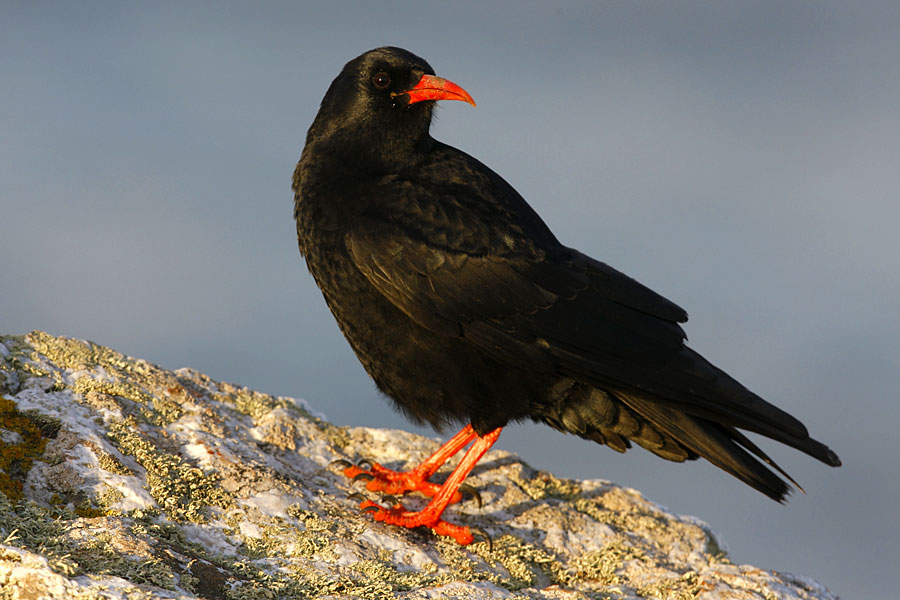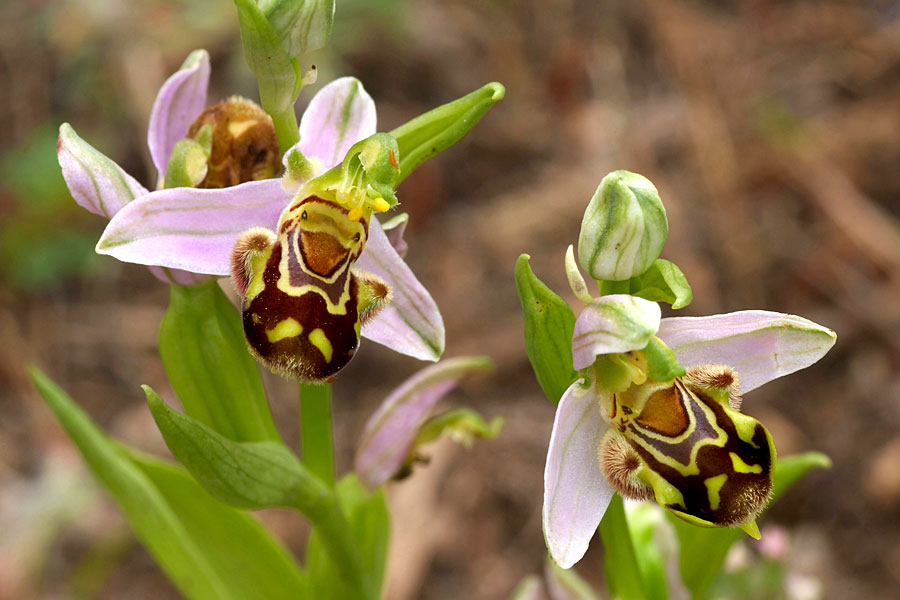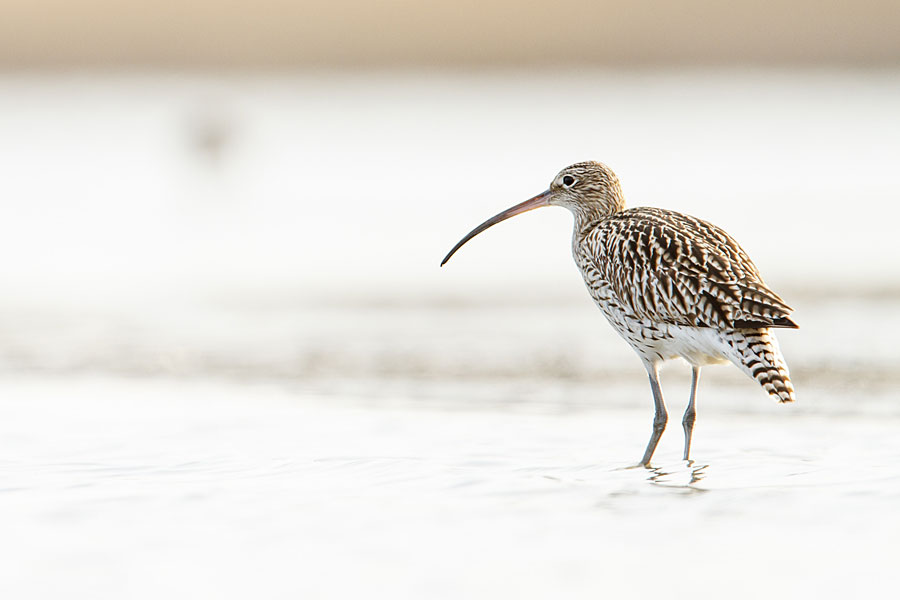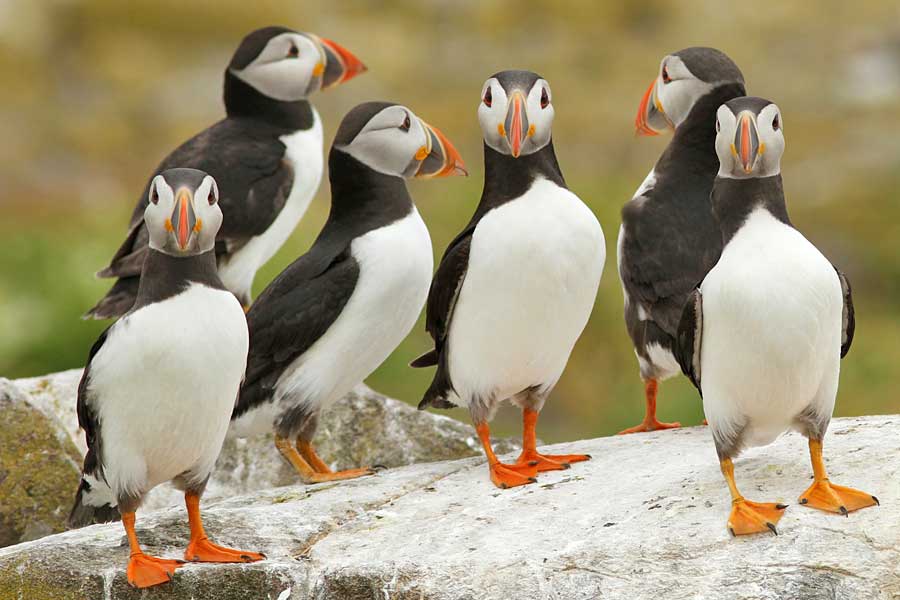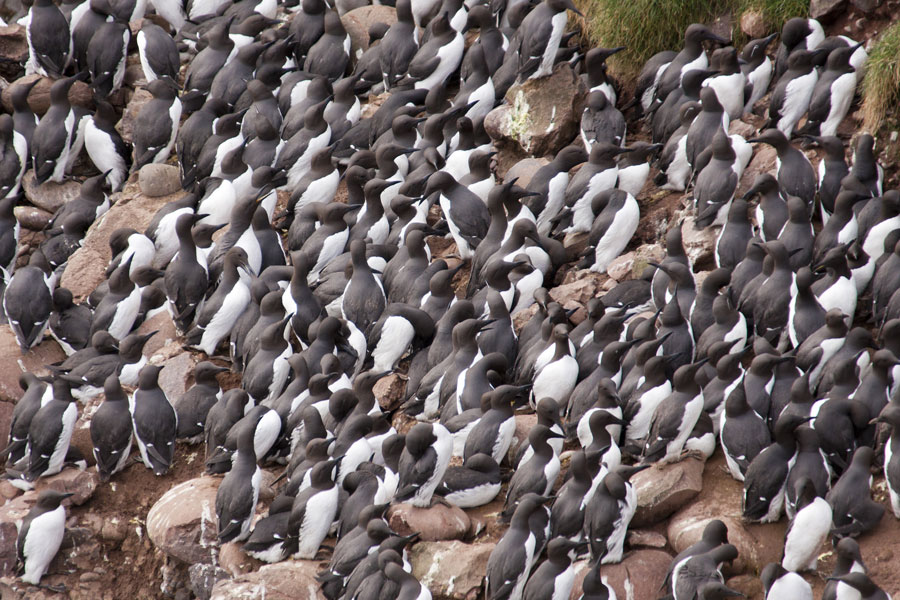
“Showy, shouty seabird cliffs”: Guillemots crowd onto the nesting ledges on South Stack, Isle of Anglesey/Ynys Mon
Wales and the Welsh coast teem with important wildlife that we should all value and care for, says Lizzie Wilberforce, editor of Welsh wildlife magazine, Natur Cymru
WALES IS A GREAT PLACE FOR DISCOVERING AND WATCHING WILDLIFE. Its varied topography and its relatively warm, damp oceanic climate support a huge array of natural habitats that are home to many species, some of which can be found nowhere else in the world. The Radnor lily, Ley’s whitebeam and spotted rock-rose are just some of the plants that can only be found in Wales.
Wales is rich in natural habitats
Around a third of Wales’ land cover is still close to natural habitat, and some of these areas are extensive. Large areas of upland heathland occur in Snowdonia, Denbighshire and Powys especially, and are important for species like brown hare, lapwing, chough, ring ouzel, and twite.
Woodland currently covers around 15% of Wales, and around 95,000 ha of those woodlands are considered ancient. Important amongst these ancient, wooded areas are our precious Celtic Rainforests. These wonderful ancient oak woodlands occur in areas of higher rainfall and humidity and are dripping with incredible communities of mosses, liverworts and lichens.
In the lowlands, our coastal and flood plain grazing marshes are important places where agriculture and wildlife have woven an intimately shared history. Where farming has remained low-impact in these expansive grasslands, they have remained rich in wildlife as well as supporting livestock. Flowers thrive amongst the grasses, including scarce or restricted species like the wonderfully-named marsh stitchwort and tubular water dropwort. Our coastal wildlife-rich grazing land is critical for over-wintering wading birds such as golden plover, lapwing, curlew and whimbrel, which can sometimes be seen in large numbers around the Welsh coast in the colder months.
The wildlife of Wales has unquantifiable intrinsic value, providing the rich tapestry of land and seascapes that is loved by so many. However, it is also important to the people of Wales on a more material level. It shapes their homes, their passions, and their livelihoods. The wildlife of Wales supports its popularity as a tourist destination, with tourism contributing around 8% of the Welsh economy and supporting 10-15% of the workforce.
Wales’ 870-mile coastline is one of its greatest assets in both intrinsic and economic terms – it is home to some of our most iconic and precious Welsh wildlife, and is therefore incredibly important to the sustainable tourism sector. Around 60% of the resident Welsh population also live and work in the coastal zone.
Wales’ coastal wildlife
One incredible coastal species for which Wales has an international responsibility, and a unique duty of care, is the Manx shearwater. This fantastic seabird is nowhere near as well known and recognised as its importance in Wales merits, given that Wales is home to over half the entire world population. This gentle bird breeds in underground burrows on our offshore islands like Skomer, Skokholm, Ramsey and Bardsey, as it is incredibly vulnerable to ground predators like rats, otters, or foxes- whose absence on our islands allows them to persist there. Skomer is our largest colony, with more than half a million of the birds present during the summer. As well as breeding underground, their nocturnal nature means that the birds may go largely unseen by most daytime visitors to our coast. Nonetheless Wales is truly of global importance for protecting this beautiful migratory bird.
The Welsh coast is also important for many other much more easily seen seabirds, such as the ever-popular and iconic puffin, which is also found on several of our offshore islands- and other auks like razorbills and guillemots which are rather more widely distributed on our cliff faces. Puffin numbers have fallen globally, but thankfully so far puffins in Wales appear to be bucking that trend.
Coastal heaths in Wales
An important habitat that covers large parts of the Welsh coast is coastal heath – a habitat which in late summer is carpeted in the luxuriant purples and golds of heathers and gorse, accompanied by the glorious, sweet coconut aromas that rise from the gorse flowers as they bask in the sunshine. This habitat can be found all round Wales, but especially on Gower, in Pembrokeshire, and around the north Wales coast. Coastal heathland depends upon the traditional low intensity grazing of the coastal strip by cattle and ponies. The heaths overlie impoverished and often shallow soils, but are rich in wildlife, with reptiles like lizards and slow-worms often abundant, as well as birds of conservation concern like yellowhammer and linnet that are declining on our farmland. Rare lichens like the golden hair-lichen also grow on the rocks, and uncommon insects such as the grayling butterfly find nectar here. Some of our South Wales coastal heaths are also home to breeding Dartford warbler, a species not known to breed in Wales at all until 1998.
Of course, when we think about the importance of the Welsh coast for wildlife, we can’t neglect the wealth of life that occurs on, in or under the sea itself. Our seas represent a fabulous diversity of habitats from kelp forests to rocky reefs, and seagrass beds and underwater mud flats. Seagrasses are actually flowering plants- the only ones able to live and even pollinate whilst submerged in the salty water. Their beds are incredibly important habitats for other marine life, but they are also thought themselves to contribute 15% of the seas’ carbon absorption through their photosynthesis. Their beds are found in sheltered estuaries and bays around Wales and are now the subject of much conservation action.
Dolphins and porpoise in Wales
More visible than these wonderful underwater worlds are the charismatic megafauna of our seas: the dolphins and porpoises. Like our seabirds, they benefit from Welsh seas’ juxtaposition of warm currents from the south and cooler more nutrient-rich waters from the north, creating a wealth of habitats and resources where many species find their niche. Common Dolphin and Harbour Porpoise are regularly seen around Wales, and the famous semi-resident population of Bottlenose Dolphins in Cardigan Bay is one of only two in the UK. They particularly favour the areas of fast currents near headlands and estuaries within the Bay, feeding on crustaceans, molluscs and fish. If you are lucky enough to see them feeding, you may spot dolphins tossing fish into the air; and catching them again; watching them, it’s hard to imagine they aren’t doing it simply for the fun of it.
Wherever you are on the Welsh coast path – from the busiest city seafronts to the remotest headlands, there is always something interesting to see. The Welsh coast is a wildlife watcher’s dream, and a place that must be protected for all future generations.
Welsh urban wildlife
Also, let’s not forget that with many of Wales’ major cities and towns being located on the coast, there is plenty of urban coastal wildlife of importance too – you don’t have to head out to the wilds to find iconic and important species. Cardiff may be Wales’ biggest city, but otters use all the rivers that converge there. Swifts, a declining species now amber-listed in Wales, breed here in good numbers and can be heard screaming over the city centre and Cardiff Bay during the summer months. The less threatened, but still spectacular, great crested grebe can also been seen in Cardiff, displaying their extravagant ruffs even in some of the busiest parts of Cardiff Bay.
It is worth remembering that whilst Wales’ wildlife is glorious, and a visit to the coast is one of the best ways to experience its highlights, Wales’ wildlife is still under threat. Issues such as climate change, invasive species and changes in land use present a clear danger to our wild places, and many species face an uncertain future. So please tread lightly when you visit- respect the Countryside Code, and if you can, support the many charities who are working hard to protect and restore the Welsh countryside and habitats around our coast.
Help us to protect Welsh wildlife
Wherever you are on the Welsh coast path – from the busiest city seafronts to the remotest headlands, there is always something interesting to see, whatever the time of year. From the showy, shouty seabird cliffs in summer to the multicoloured waxcap fungi of the tight-grazed coastal slopes in autumn, or the blue flush of the Spring squills and bluebells flowering on the clifftops in spring, the Welsh coast is a wildlife watcher’s dream, and a place that must be protected for all future generations.
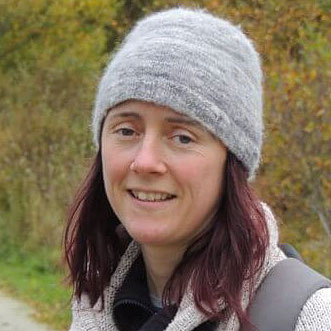
Lizzie Wilberforce – editor of Natur Cymru magazine
This article has been specially written for this website and is published here with the author’s permission. Copyright ©Lizzie Wilberforce 2021. All rights reserved.
Lizzie Wilberforce is the editor of Natur Cymru magazine, which is published by the Initiative for Nature Conservation Cymru, for details, see: www.natureconservation.wales. She has worked in nature conservation in Wales for twenty years, including as a land manager and ecologist.
Contact: lizzie.wilberforce@incc.wales

